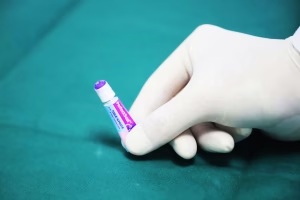

Contents
Reliable medical equipment is the backbone of every healthcare facility. Whether it’s a surgical tool, diagnostic device, or a piece of medical office equipment, proper care and maintenance directly impact patient safety, operational efficiency, and compliance standards.
A solid medical equipment maintenance plan doesn’t just prevent costly breakdowns, it ensures that healthcare facilities can consistently deliver accurate diagnoses, perform safe procedures, and extend the life of their investments. Equipment that fails unexpectedly can disrupt care, increase expenses, and compromise both staff and patient trust.
This article provides a comprehensive roadmap for maintaining medical equipment for long-term reliability, featuring proven best practices and products.
Medical equipment maintenance is a long-term investment in patient safety, cost efficiency, and reliability. Well-maintained tools reduce downtime, meet compliance standards, and help facilities control their historical budgets. Key benefits include:
Whether managing surgical instruments like scissors, sutures, and blades or larger durable devices, consistent upkeep guarantees long-term performance.
An effective maintenance strategy begins with understanding the type, usage frequency, and criticality of each device. Hospitals and clinics can categorize equipment as:
A proactive maintenance schedule ensures each tool is checked, serviced, and recorded within your inventory management system, reducing the likelihood of unexpected downtime.
Sterility is the foundation of patient safety. After each use, all instruments should be cleaned using proper disinfectants to prevent contamination or degradation. Products, such as Cover-Roll bandages, Polysorb Sutures, and sharps containers, should always be handled with sterile precautions.
Even small negligence in sterilization can cause biofilm buildup, leading to instrument damage and potential infection risk for patients.
Each medical device comes with specific manufacturer guidelines that define cleaning methods, lubrication requirements, and inspection intervals. Ignoring these instructions can void extended warranties and cause performance degradation.
Facilities should:
Adhering to these guidelines ensures equipment longevity while maintaining compliance with federal health programs and insurance audits.
Gone are the days of paper records. Healthcare facilities now rely on digital platforms for streamlined medical equipment maintenance tracking. A centralized log helps:
This digital approach also supports regulatory compliance by maintaining an auditable trail of maintenance actions, crucial for healthcare accreditation and Medicare documentation.
Unplanned equipment failure can halt procedures and compromise care delivery. To mitigate this, hospitals must maintain a healthy supply chain and stock essential spare parts.
Efficient coordination between procurement, maintenance, and suppliers ensures uninterrupted service and budget predictability.
Routine inspections verify whether medical devices meet regulatory compliance standards and manufacturer specifications. Hospitals should schedule:
These audits demonstrate accountability to accrediting bodies and guarantee equipment reliability in both routine and emergency procedures.
A maintenance plan is only as effective as the staff executing it. Regular training ensures physicians, nurses, and technicians understand the correct care methods for each piece of medical equipment.
Training should cover:
By building a preventive maintenance culture, healthcare teams minimize breakdowns, promote accountability, and improve patient outcomes.
Maintenance doesn’t just protect equipment, it protects finances. Clinics should monitor maintenance costs against historical budgets to identify trends and savings opportunities.
This data-driven approach supports financial planning and ensures consistent readiness for both expected and unexpected maintenance events.
Long-term reliability requires more than routine servicing, it demands care consistency. Best practices include:
Adhering to these steps can extend the lifespan of critical devices by several years while maintaining compliance and safety standards.
For large healthcare networks, integrating medical equipment maintenance with supply chain and inventory management systems is essential. This creates a single source of truth for maintenance activities, asset tracking, and procurement planning.
This interconnected workflow helps facilities maintain readiness and budget discipline.
Maintaining medical equipment for long-term reliability requires strategy, discipline, and trusted partnerships. From following manufacturer guidelines and performing regular software updates to aligning maintenance with regulatory compliance and inventory management, every step protects patient safety and organizational performance.
At Strouden, we provide not only medical equipment but also the expertise and support needed to help healthcare facilities thrive. Our range of products, from surgical blades and sutures to sterilizers, gloves, and disinfectants, meets the highest standards for durability and safety. With certified sourcing, transparent warranties, and responsive customer support, Strouden ensures your maintenance program remains efficient, compliant, and cost-optimized.
Contact us today to access reliable equipment, certified products, and long-term solutions that enhance your facility’s maintenance strategy, improve reliability, and build confidence in every procedure.
Medical equipment maintenance involves regular inspection, cleaning, calibration, and repair of healthcare devices. It ensures accuracy, safety, and compliance with regulatory standards, extending the lifespan of equipment and improving reliability for consistent patient care and operational efficiency.
Maintenance is crucial for preventing failures, ensuring patient safety, and reducing repair costs. A consistent maintenance strategy enhances medical device reliability, supports accurate diagnoses, and helps healthcare facilities meet compliance standards required for quality assurance and reimbursement programs.
Without proper maintenance, devices may malfunction, delay procedures, or compromise patient safety. This leads to higher costs, compliance violations, inaccurate diagnoses, and reduced efficiency, negatively impacting both healthcare outcomes and the facility’s reputation.
First, clean and sterilize equipment after each use. Second, inspect regularly for wear or malfunction. Third, record maintenance activities in digital logs for tracking and compliance, supporting long-term reliability and operational consistency across healthcare facilities.
Regular maintenance ensures devices perform accurately during diagnosis and treatment. It enables early detection of faults, reduces downtime, and provides measurable data for performance assessment, strengthening overall medical device reliability and clinical outcomes.